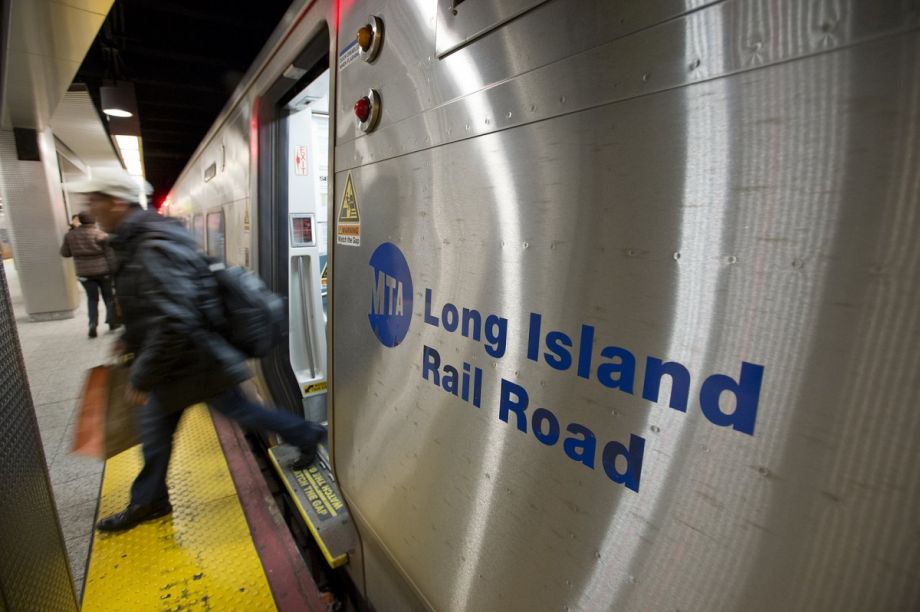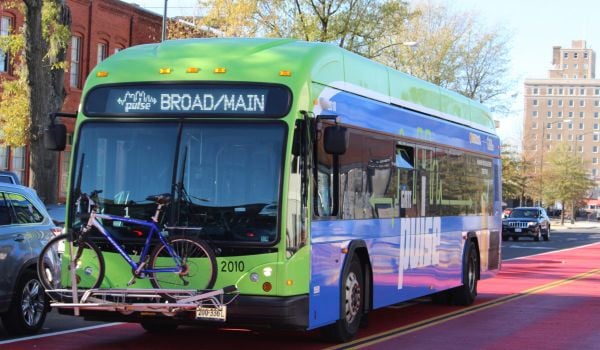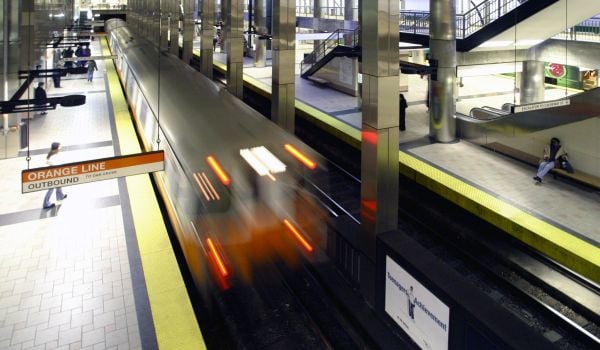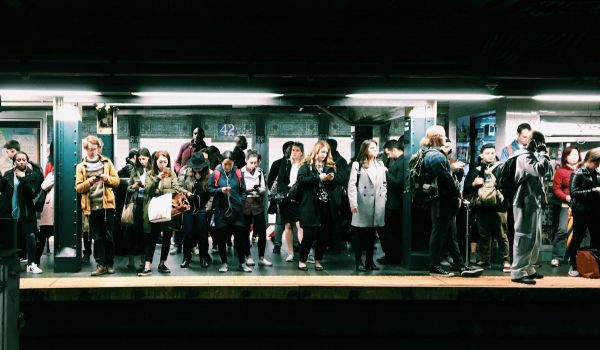Welcome to “The Mobile City,” our weekly roundup of new and newsworthy transportation developments.
The COVID-19 pandemic caused transit ridership to fall across the board, but the hardest-hit sector has been commuter and regional rail service. Largely dependent on patronage from office workers who are still working from home, regional rail has yet to begin the ridership climb bus, light rail and rapid transit service have made from their depths.
This has led many to argue that it’s time to rethink the way we run regional rail service. We should take a page from the Europeans and Australians, who run trains frequently throughout the day in all directions, the argument goes. And we should price it to attract the riders who currently take buses and subways. Doing so would require changes in the way we staff and operate the trains as well as collect fares, however. And if a recent exploration of the situation in Philadelphia — whose system may be best positioned to do all of this — is any guide, the people who staff the trains have yet to be convinced that this is a good idea.
Even with these changes, though, regional rail would still carry a small percentage of overall transit riders. Far more would continue to use buses if for no other reason than this: In most American cities, buses are the only form of transit available. But bus service can also be improved, as the success of bus rapid transit (BRT) lines in several cities has shown. Three members of Congress, however, say that many small and mid-sized cities can’t get BRT projects off the ground because they fall through the cracks in federal grant programs. They have sponsored a bill that aims to fill those cracks so they can qualify for funds.
Meanwhile, evidence continues to grow that the public in general liked the more open, less car-clogged streets the pandemic produced. Some cities, such as San Diego, are moving to make those more open streets permanent parts of the cityscape, but at the federal level, the move in this direction is more hesitant.
And finally, in Los Angeles, work has begun on the last leg of what will no longer be the “Subway to the Sea” — the Line D (Purple) extension that will take the route to the Veterans Affairs Hospital in Westwood.
What it Would Take to Turn ‘Commuter Rail’ to ‘Regional Rail’
The problem with America’s commuter rail systems is reflected in the very term we use to describe them: They are designed to take workers from their homes in the suburbs to their downtown offices in the morning and bring them back home in the evening. When the COVID-19 pandemic led their employers to keep them working from home, the overwhelming bulk of commuter rail’s ridership disappeared.
As Jake Blumgart writes in an article in Governing, this “boutique service” will neither be as useful nor as necessary going forward, for even as the white-collar crowd goes back to the office, many companies will make showing up at the office optional.
Many of the large agencies that operate regional or commuter rail service are now grappling with how to remain viable. Boston’s Massachusetts Bay Transportation Authority, for instance, is now running more midday trains on several of its lines and has reduced fares on one line that operates through a lower-income area of the city. Both Metra in Chicago and SEPTA in Philadelphia have also floated the idea of operating regional rail service at 15-minute intervals throughout the day, a common practice in both Europe and Australia.
But Blumgart found a barricade lying in the tracks on the way to this new model: the regional rail workforce and the cost of maintaining it.
Where regional trains in many European cities are operated by one person,a typical U.S. regional rail train will have crews of three or more: an engineer to drive the train and several conductors to check fares, open and close doors and more. Roger Senserreich, a Connecticut transportation advocate, told Governing, “Trains are complicated technology, but they are not the kind of thing that needs so many people supervising how they are used. [The American transit systems] are doing less with more and doing it in an extremely inefficient way.”
The result: Operating costs per kilometer that run anywhere from 35 percent higher to 2.6 times as much as it costs to run trains in Europe.
Everyone agrees that in order for this new regional rail model to work, those costs need to come down. But Blumgart’s interviews with current and former employees at SEPTA show that neither the employees nor the management are completely on board with this new vision for regional rail, citing safety issues and system capacity problems.
But Eric Goldwyn, an assistant professor of transportation at New York University, told Governing that for regional rail to remain viable, this transition has to happen, and getting the unions to see that the survival of their own jobs depends on it is crucial: “The unions can be open to improvements if they can be shown that this is going to be in the best interest not just of transit riders and our budget, but also in keeping transit viable and more attractive in the long run,” said Goldwyn. “It’s about trying to make this win-win-win. But threading that needle is really difficult.”
Proposed Bill Would Make Funding BRT Projects Easier in Mid-Sized Cities
Right now, transit agencies that want to establish faster transit services can apply to one of two Federal Transit Administration grant programs for funding: New Starts for large projects and Small Starts for small ones.
But what happens if the project is too big for Small Starts but too small for New Starts? The Atlanta Voice reports that two U.S. Representatives from the Atlanta area and a colleague in Florida have joined to co-sponsor legislation that would make it possible for these projects to qualify for federal grant funding.
Called the Build Up the Suburbs (BUS) Act, the bill would expand funding eligibility for BRT and express lane transit (ELT) projects on the suburban fringes of the country’s large cities. Lucy McBath (GA-7), Carolyn Bourdeaux (GA-6), both Democrats, are co-sponsoring the bill along with Carlos Gimenez (FL-26), a Republican.
“ELT and BRT routes are smart ways to improve existing infrastructure, allowing inner and outer suburbs to connect to metro areas without putting more cars on the road,” said Bourdeaux.
Gimenez, a former mayor of Miami-Dade County, echoed Bourdeaux’s sentiments: “Most Floridians live in suburban communities, making mobility between the suburbs and major urban centers crucial in handling our state’s continuing economic and population growth. I thank my colleagues for helping move this important legislation forward.”
The Public Weighs In on Traffic-Control Manual Revisions
The Federal Highway Administration is in the midst of updating the rule book for American road engineers, the Manual of Uniform Traffic Control Devices (MUTCD). The manual, which gets updated about once every decade, covers every detail of road design and signage and even sets guidelines for implementing laws and policies governing traffic on the roads.
But a significant change has taken place across the country since the manual’s last edition, the 10th, appeared in 2009: City transportation officials and traffic engineers have established themselves as a force separate and distinct from the state transportation departments that have historically shaped the way our streets, roads and highways look and function.
And the organization representing them, the National Association of City Transportation Officials (NACTO), reports that during the comment period for the proposed revisions, which ended May 14, more than 25,000 Americans submitted comments to the FHWA asking for major changes. That figure, NACTO says, represents a tenfold increase in the number of comments received this time around.
A good number of those comments came from individuals responding to calls for action from advocacy groups such as America Walks and concerns raised by NACTO itself. Many of those comments echo the words of this comment from Noah Bendell, who calls on FHWA Acting Administrator Stephanie Pollack and Transportation Secretary Pete Buttigieg to incorporate these changes that “center safety, equity and accessibility” into the 11th MUTCD:
· Ensure every urban and suburban signalized intersection has accessible pedestrian infrastructure, including curb ramps, audible and tactile signals, pedestrian signal heads that display “Walk” and “Don’t Walk” messages, and painted crosswalks.
· Set speed limits based on safety, not based on how fast cars are driving on the road
· Give local residents a voice in what kind of infrastructure is needed.
· Give engineers flexibility to design urban streets that are safe enough for children to navigate.
· Prioritize bike and bus infrastructure over cars and parking.
· And encourage healthy and vibrant street life.
“For a field focused on movement, American transportation often suffers from inertia. Just look at our federal roadway standards, which maintain the status quo despite a traffic violence epidemic,” said Corinne Kisner, NACTO’s executive director, in its news release. “To make our streets safe, sustainable, and equitable, FHWA must commit to reforming this motor-centric regulatory document that affects every street in the country, and upgrade it to better reflect how we actually use, and want to use, our streets.”
Ground Broken for Last Leg of LA’s Purple Line Subway
Even after taking into account a court-ordered pause that forced the Los Angeles County Metropolitan Transportation Authority (LA Metro) to beef up bus service, Los Angeles has been building out a metropolitan rail transit system at a breakneck pace. And the Los Angeles Times reports that LA Metro took advantage of the pandemic-induced drops in both ridership and road traffic to pick up the pace of construction. Three rail construction projects were all underway during the pandemic, including a light metro line to Los Angeles International Airport, a downtown connector subway for several light metro lines and an extension of Line L (Gold) in the San Gabriel Valley.
On May 24, those three projects were joined by a fourth: extending Line D (Purple), the subway under Wilshire Boulevard originally envisioned to run from LA Union Station all the way to downtown Santa Monica.
Mass Transit’s report on the groundbreaking notes that the extension now underway will add another 2.6 miles of tunnel and two more stations to the Wilshire subway line. It’s the third phase of a three-phase project that takes the subway from its current terminus at Wilshire Boulevard and Western Avenue to the Veterans Affairs Medical Center in Westwood. The last leg of the project extends the line to the hospital from Century City with an intermediate stop serving the UCLA campus.
The Federal Transit Administration picked up about half the tab for the $9.5 billion project. The rest of the money comes from Measure M, a 40-year regional sales tax approved by county voters in 2016. The voters bought the proposal partly on its promise to deliver the city a world-class mass transit system in time for the Summer Olympics that LA will host for the third time in 2028. This last leg of Line D is set to open the year before that.
“We promised Angelenos a world-class transit system when we passed Measure M, and this milestone is a clear indication of our commitment to make Los Angeles a more accessible, sustainable and inclusive city,” said LA Mayor and LA Metro Board Chair Eric Garcetti at the groundbreaking.
But the Times report notes that it’s unclear whether all the riders who were supposed to use these new lines will actually show up to ride them. System ridership was already falling when the pandemic sent it over a cliff, and while average daily ridership has bounced back from a low of about 363,000 to 700,000 in May, most of those riders are Black and Latino (together, they account for 75 percent of the total) and lower-income (70 percent had annual household incomes below $35,000). The demographics of LA’s Westside are almost diametrically opposite these.
“We have to break those barriers down,” said LA Metro CEO Philip A. Washington said after the groundbreaking, and “we have to convince people that the system works, and that these connections right here actually work.” But, he added, “We’re bullish on transit, and we’re bullish on ridership returning.”
Know of a development that should be featured in this column? Send a Tweet with links to @MarketStEl using the hashtag #mobilecity.

Next City contributor Sandy Smith is the home and real estate editor at Philadelphia magazine. Over the years, his work has appeared in Hidden City Philadelphia, the Philadelphia Inquirer and other local and regional publications. His interest in cities stretches back to his youth in Kansas City, and his career in journalism and media relations extends back that far as well.
Follow Sandy .(JavaScript must be enabled to view this email address)







_920_518_600_350_80_s_c1.jpg)








